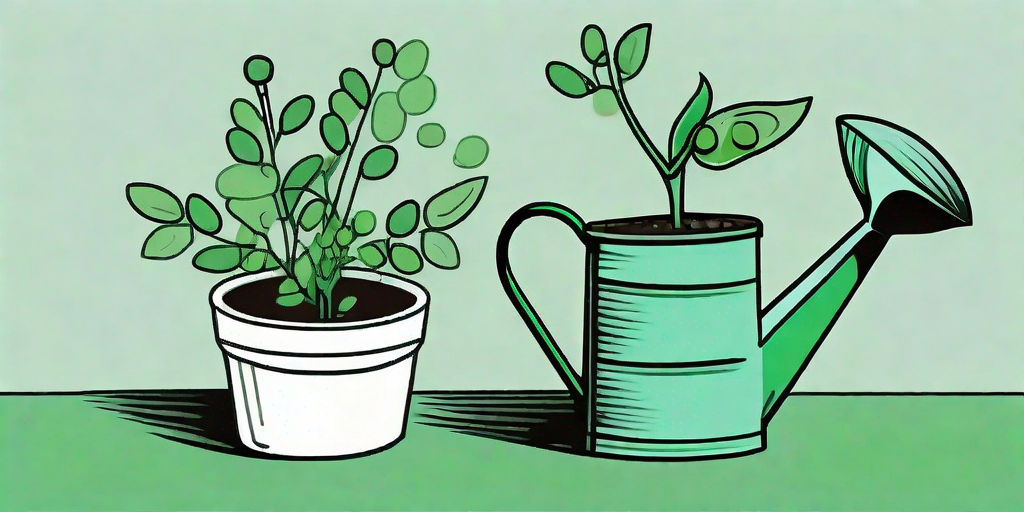
Welcome to the world of pea cultivation, where the humble pea is elevated from a simple side dish to the star of the show. If you've ever wondered about the journey of a pea from soil to supper, you're in the right place. Prepare to embark on a journey that will transform your garden, your kitchen, and your appreciation for this versatile vegetable.
Why Grow Peas?
Before we delve into the 'how', let's address the 'why'. Why should you dedicate precious garden space to growing peas? Well, dear reader, the reasons are as plentiful as peas in a pod (pun intended).
Firstly, peas are packed with nutrients. They're a great source of vitamins A, B1, B6, C, and K. Not to mention, they're rich in protein, fiber, and several essential minerals. So, by growing your own peas, you're not just cultivating a garden; you're nurturing your health.
Secondly, peas are incredibly versatile in the kitchen. They can be used in salads, soups, stir-fries, and even desserts. Yes, you read that right, desserts! Pea ice cream, anyone?
Lastly, growing peas is fun and surprisingly easy. They're an excellent choice for beginner gardeners and children. Plus, there's something incredibly satisfying about popping open a fresh pod to reveal the little green gems inside.
Getting Started
Choosing Your Pea Variety
Peas come in many shapes and sizes, each with its own unique taste and texture. The three main types are garden peas (also known as English peas), snow peas, and snap peas.
Garden peas are the classic variety that most people are familiar with. They have a sweet flavor and are typically removed from the pod before eating. Snow peas are flat with small peas inside; they're often used in Asian cuisine. Snap peas are a cross between garden and snow peas; they're entirely edible, pod and all.
When choosing your pea variety, consider your culinary preferences and your climate. Some varieties are more heat-tolerant than others, so choose a variety that's suitable for your local weather conditions.
Preparing Your Garden
Peas love cool weather and full sun, but they can tolerate a bit of shade. They prefer well-drained soil with a pH between 6.0 and 7.5. If your soil is on the acidic side, you can add lime to raise the pH.
Before planting, prepare your garden bed by removing any weeds or rocks. Then, enrich the soil with compost or well-rotted manure. This will provide your peas with the nutrients they need to thrive.
Planting Your Peas
Peas can be direct sown in the garden as soon as the soil can be worked in the spring. Plant them 1 inch deep and 2 inches apart in rows 18 to 24 inches apart. If you're planting climbing varieties, be sure to provide a trellis or other support structure for the vines to climb.
After planting, water your peas thoroughly. Keep the soil evenly moist but not waterlogged. Peas don't like to have 'wet feet'.
With proper care, you should see sprouts in 7 to 14 days. Once the plants are up, mulch around them to conserve moisture and suppress weeds.
Caring for Your Peas
Peas are relatively low-maintenance, but they do require some care to produce a bountiful harvest. Regular watering is essential, especially during dry spells. However, be careful not to overwater, as this can lead to root rot.
Peas also benefit from regular feeding. Use a balanced organic fertilizer every 4 to 6 weeks to keep your plants healthy and productive.
Finally, keep an eye out for pests. Common pea pests include aphids, pea weevils, and powdery mildew. If you spot any of these, treat your plants with an organic pesticide or fungicide.
Harvesting Your Peas
The moment of truth has arrived: it's time to harvest your peas. The exact timing will depend on the variety, but generally, peas are ready to harvest when the pods are plump and firm to the touch.
Harvest your peas by gently pulling or cutting them from the vine. Be careful not to damage the plant in the process. It's best to harvest in the morning when the peas are at their sweetest.
Once harvested, peas should be eaten as soon as possible for the best flavor. If you can't eat them all right away, you can blanch and freeze them for later use.
FAQs
Can I grow peas in containers?
Absolutely! Peas are a great choice for container gardening. Just be sure to choose a container that's deep enough for the roots and wide enough for the plants to spread out.
When should I plant peas?
Peas should be planted in early spring, as soon as the soil can be worked. They can also be planted in late summer for a fall harvest in cooler climates.
How long does it take for peas to grow?
Most pea varieties mature in 60 to 70 days, although some can take up to 100 days. Check the seed packet for specific information about your chosen variety.
Conclusion
And there you have it, folks: a comprehensive guide to growing your own delicious peas. With a bit of preparation, some care, and a dash of patience, you'll be enjoying homegrown peas in no time. So, what are you waiting for? Get out there and start planting!
Remember, the journey of a pea from soil to supper is not just about the destination (although, let's be honest, that's pretty great too). It's about the joy of nurturing a seed into a plant, the satisfaction of harvesting your own food, and the delight of biting into a fresh, sweet pea straight from the pod. Happy gardening!











